
Mastering Herbal Formulation
Herbal Academy
Herbal formulation is the art and science of combining herbs to create safe, well-balanced, and effective multi-herb formulas. The Mastering Herbal Formulation Course is more than a step-by-step guide on how to combine herbs. This comprehensive, multimedia course delivers all the concepts you need to know—from herbal actions and energetics to phytochemicals and solubility, from synergy to safety and dosage considerations—all in one extensive and easy-to-digest program.
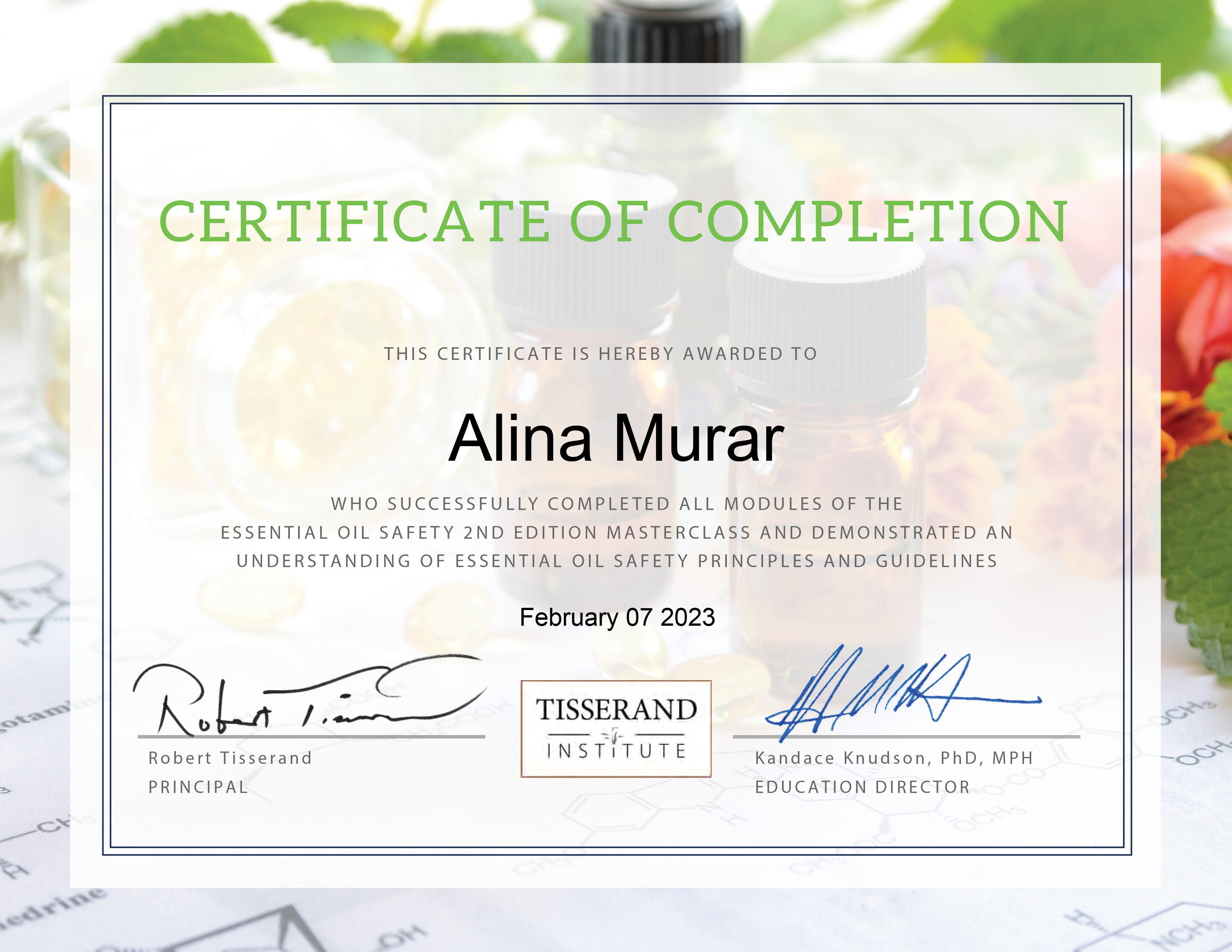
Essential Oils Safety 2e
Tisserand Institute
This eight-week online certification course – instructed by the author of Essential Oil Safety and one of the world's leading experts – will explore the science behind safety, and the reasoning behind safety guidelines. You'll discover how essential oils work in the body, identify constituents responsible for certain properties (beneficial or otherwise), evaluate risks against benefits, calculate proper percentages, and more.
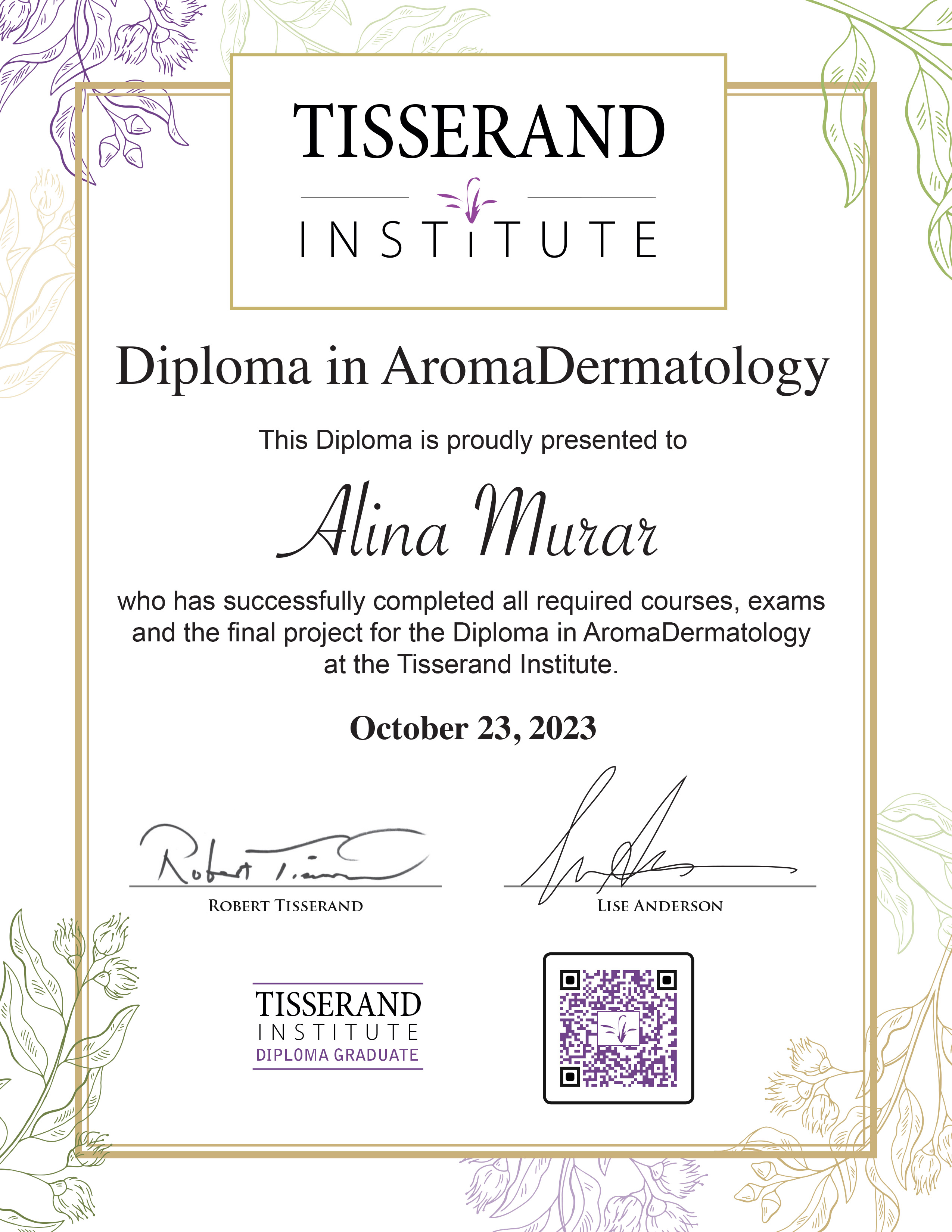
AromaDermatology
Tisserand Institute
Ten months of learning how to take care of your or your clients' skin. Six courses, four single classes, three tutors, you learn how to make safe, evidence-based and effective products for application to the skin, using essential oils with Robert Tisserand, a global expert in the field of essential oils with 50+ years of experience.

Emulsions Essentials
Tisserand Institute
Lise Andersen expertly walks you through the process and equips you with the knowledge to make your own safe, stable, hand-stirred emulsions without having to invest in pricey lab equipment. You'll get step by step instructions and six unique formulations from eye serum to face cleanser to rich soothing salve.

Essential Gels and Serums
Tisserand Institute
How to make gels for all kinds of therapeutic and cosmetic applications - from cooling after-sun care to a soothing chest rub.

Advanced Chemistry - Molecular Dynamics
Tisserand Institute
How essential oils interact with the body on a cellular level, focusing on five key essential oil constituents we wouldn't want to live without. The course delves into the relationships between chemical families, and the chemical changes that typically occur over the lifecycle of the whole essential oil.
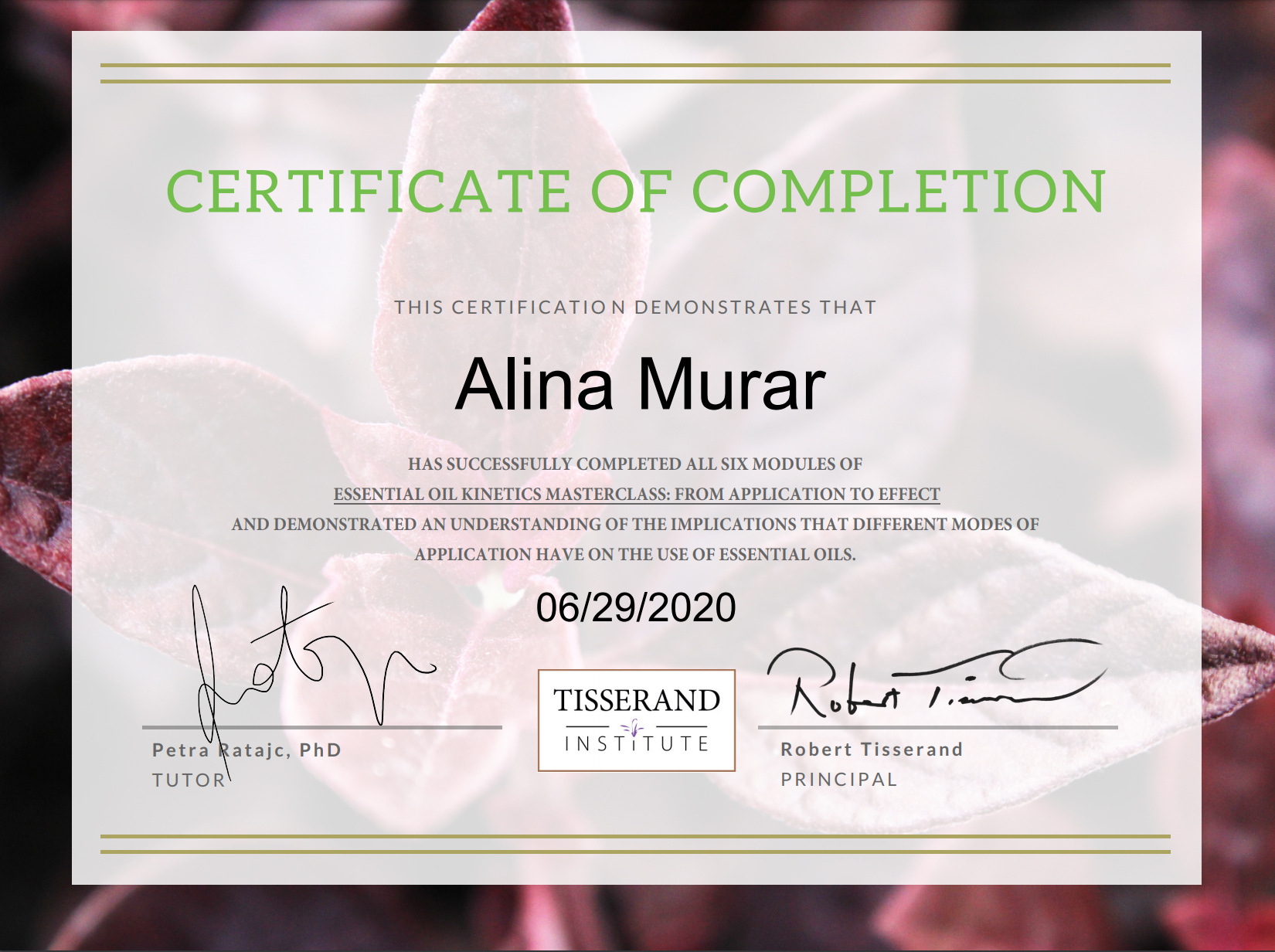
Essential Oil Kinetics Masterclass
Tisserand Institute
What happens in our body after we apply essential oils to it. Pharmacokinetics – the journey that essential oil constituents take as they move through your body – and what this means for effective application.
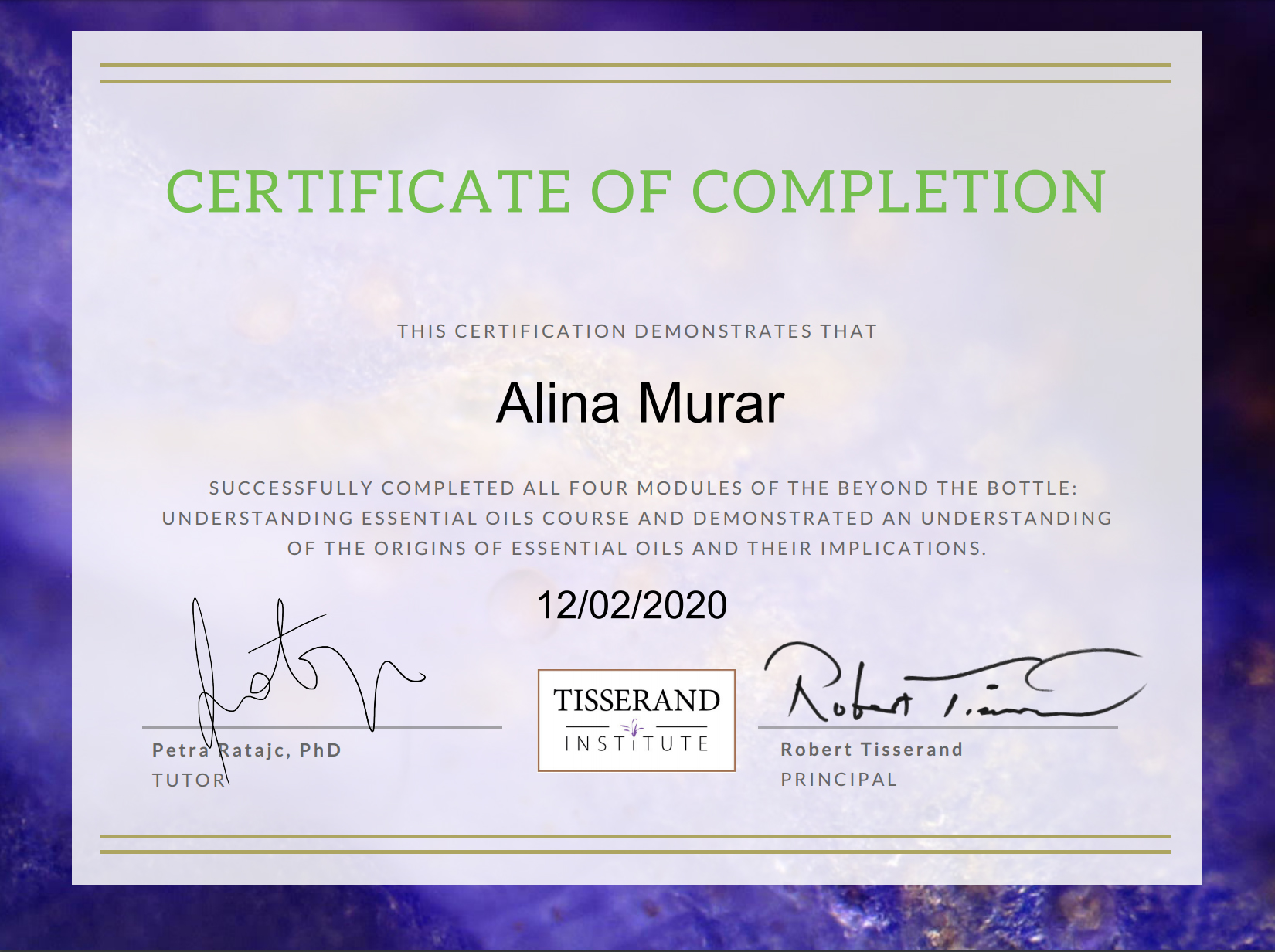
Beyond the Bottle
Tisserand Institute
Highlights on production, sustainability and quality control. In this groundbreaking course, you'll no longer be at the mercy of marketing that may not be accurate, or doesn't address what you really need to know.
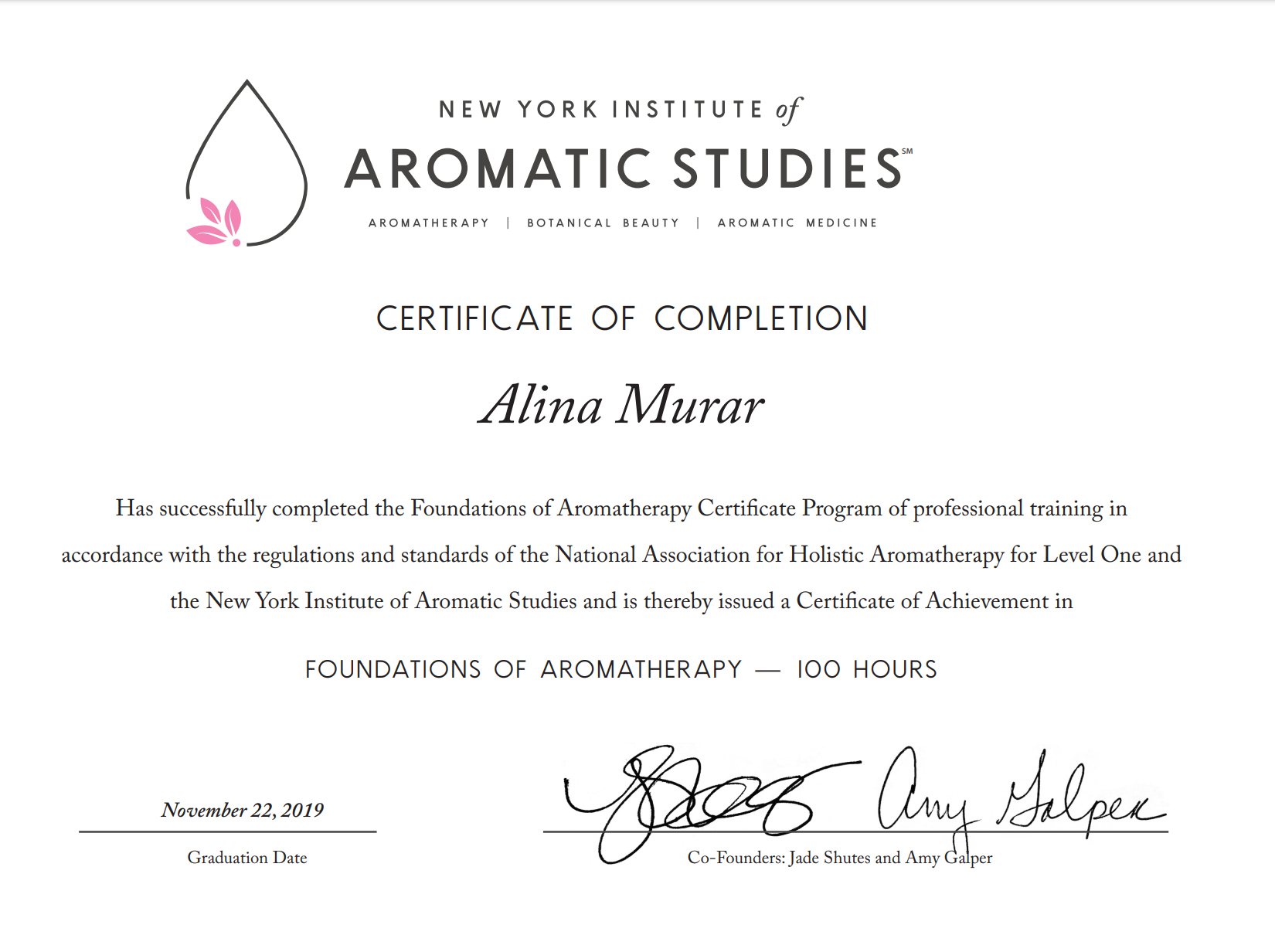
NAHA Level I Certified Aromatherapist
New York Institute of Aromatic Studies
Foundations of Aromatherapy Certificate Program of professional training in accordance with the regulations and standards of the National Association for Holistic Aromatherapy for Level One and the New York Institute of Aromatic Studies.
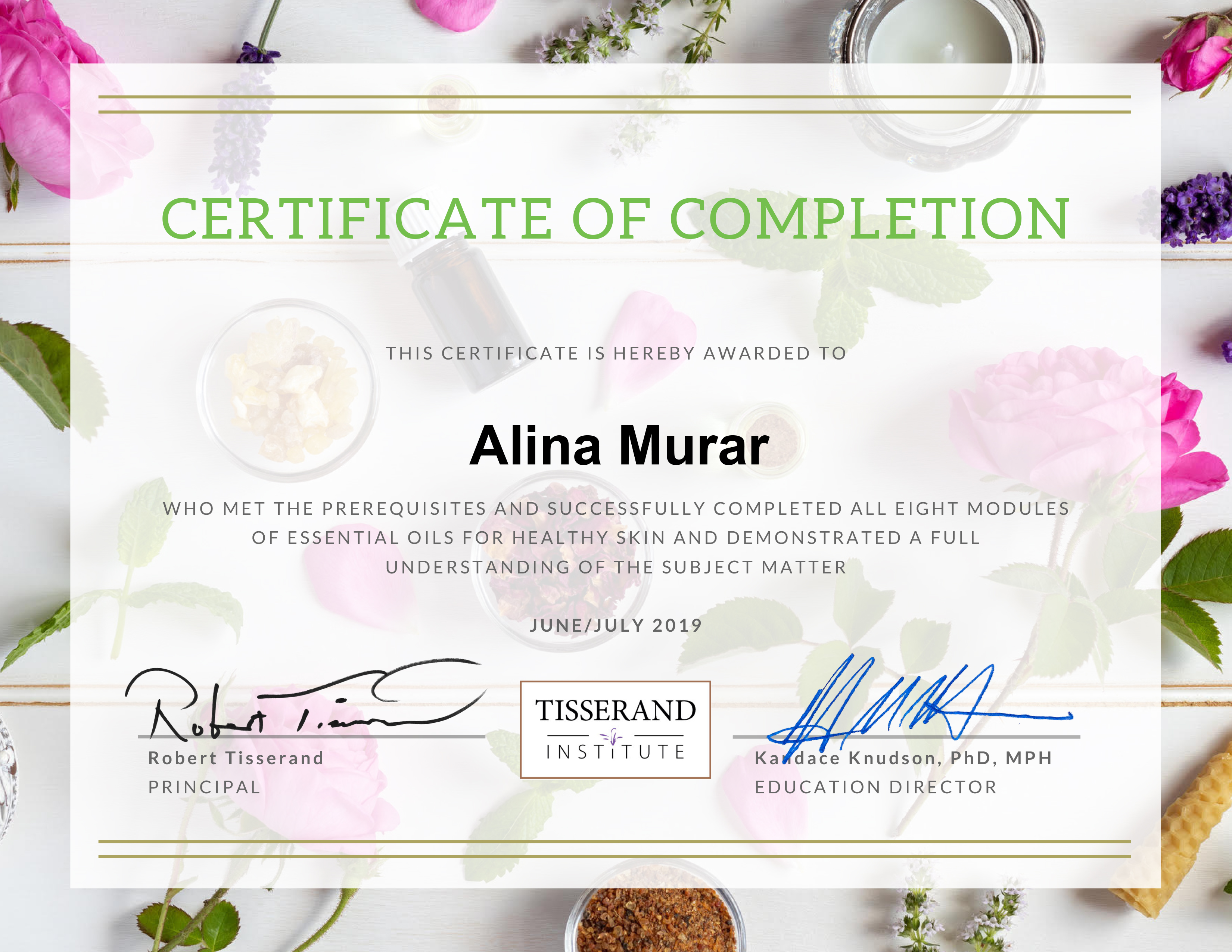
Essential Oils for Healthy Skin
Tisserand Institute
Robert Tisserand explores the effects of aromatics on skin health. Learn how to address common skin ailments and how to mix and blend essential oils, CO2 extracts and fatty oils with other ingredients to promote healthy and radiant skin.
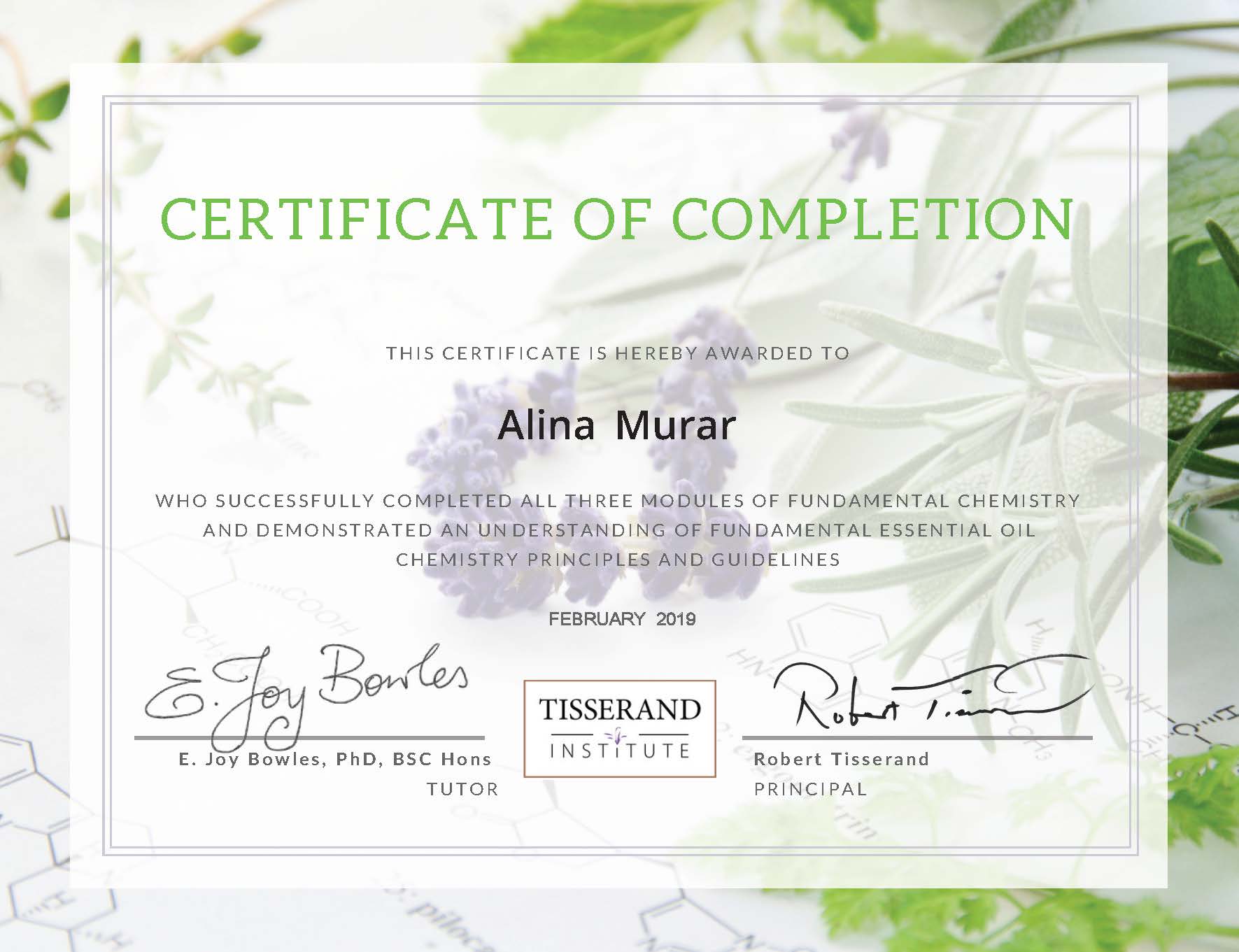
Fundamental Chemistry
Tisserand Institute
Building on that knowledge, we will go into chemical structures, nomenclature, and analysis of essential oils.
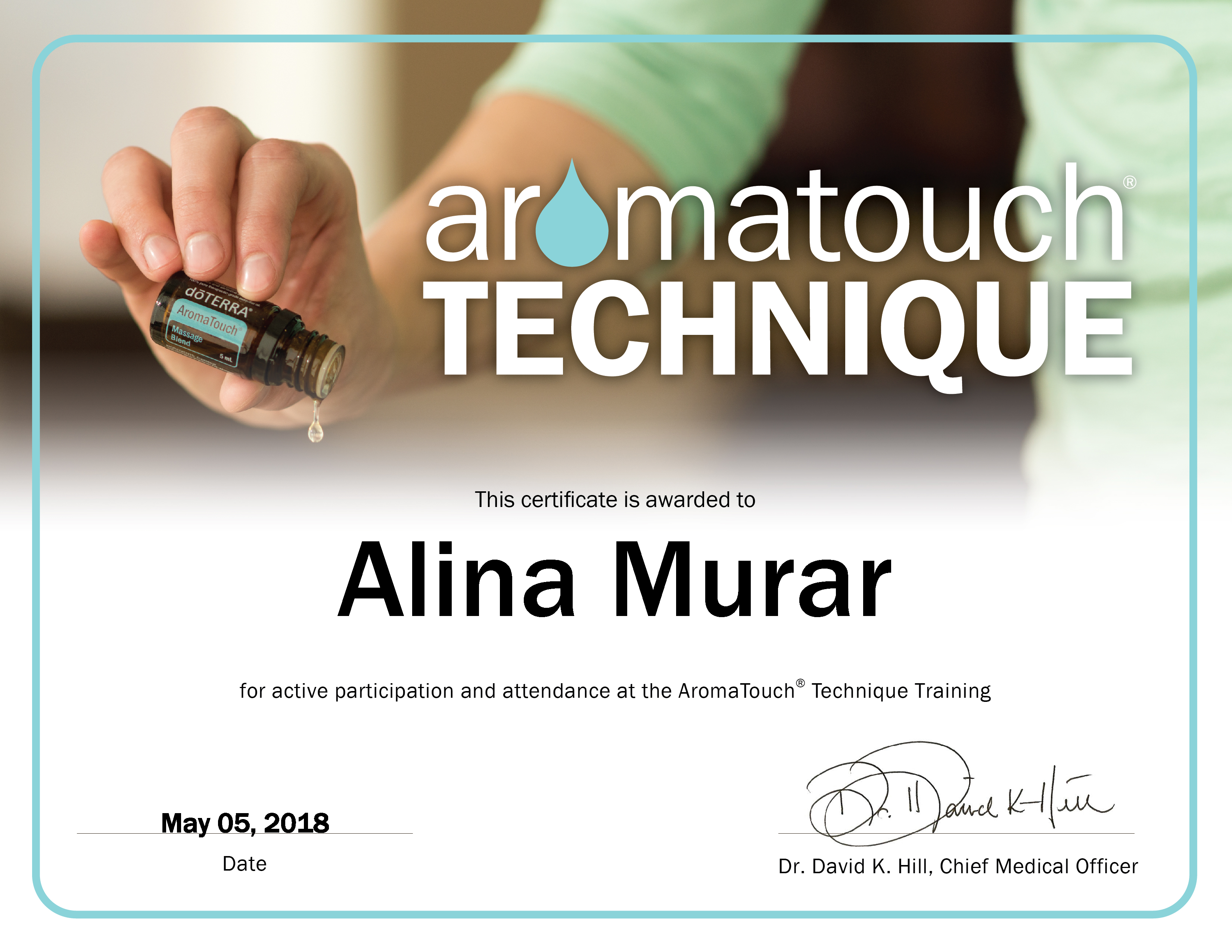
Aromatouch Technique
doTERRA
The AromaTouch Technique is a gentle yet powerful therapeutic approach that uses essential oils and human touch to address the body holistically. It's not a traditional massage, but a specific sequence of oil applications along the body's energy lines and reflexology points.

Symphony of the Cells
doTERRA
Symphony of the Cells™, SOC, takes a holistic approach to wellness, and recognizes the importance of taking proper care of our bodies. It encompasses a variety of tailored essential oil applications, that target different body systems and related conditions.
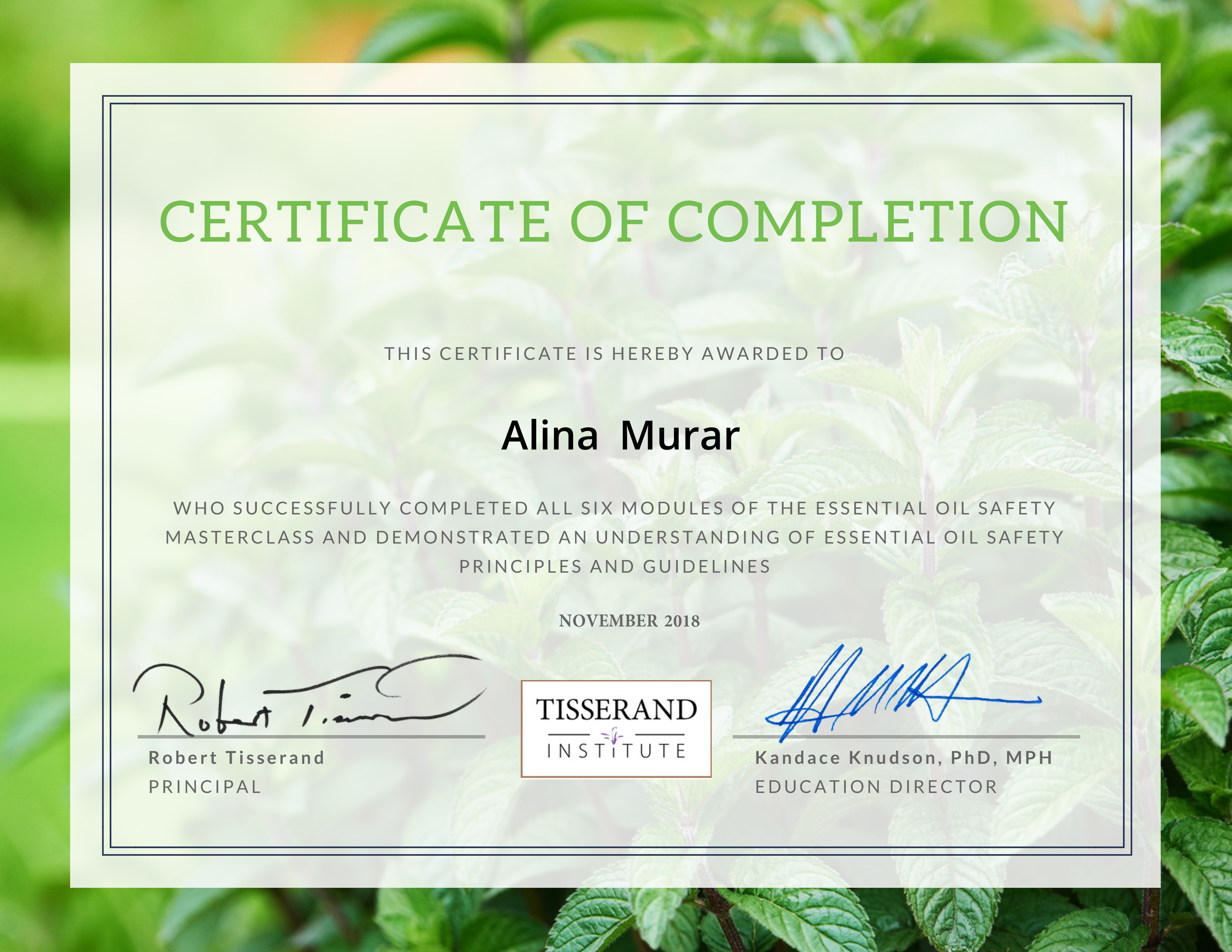
Essential Oil Safety
Tisserand Institute
Essential oils are brimming with powerful constituents that can soothe the skin, speed up wound healing, ease pain, calm the mind, and much more. But with great power comes great responsibility because they can also cause skin irritation, sensitization, phototoxicity, and other preventable adverse reactions.